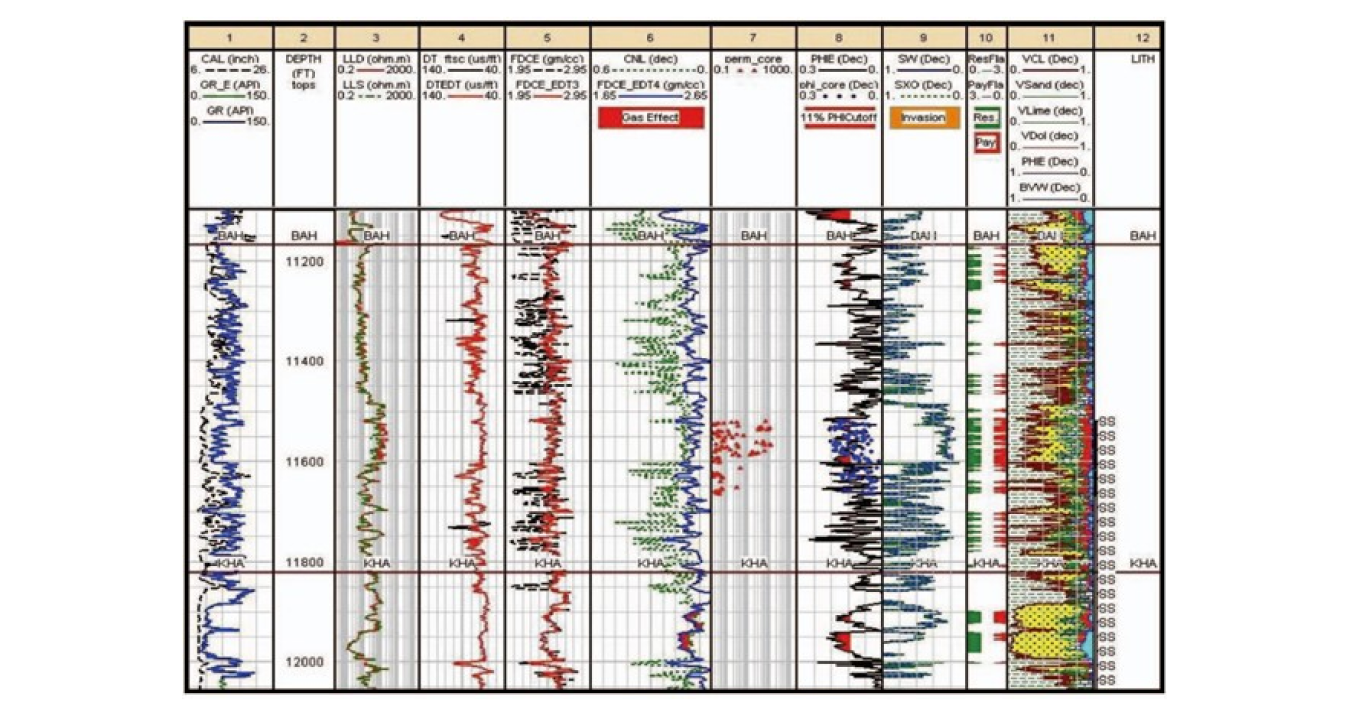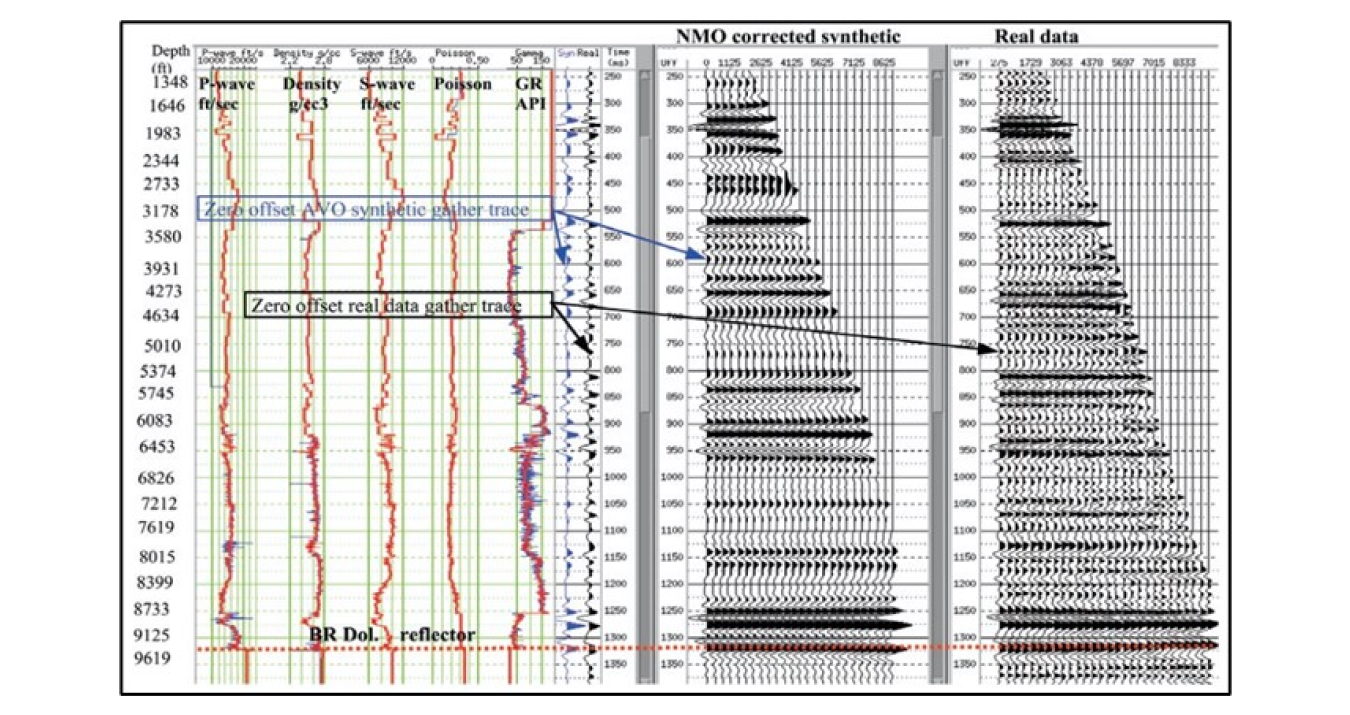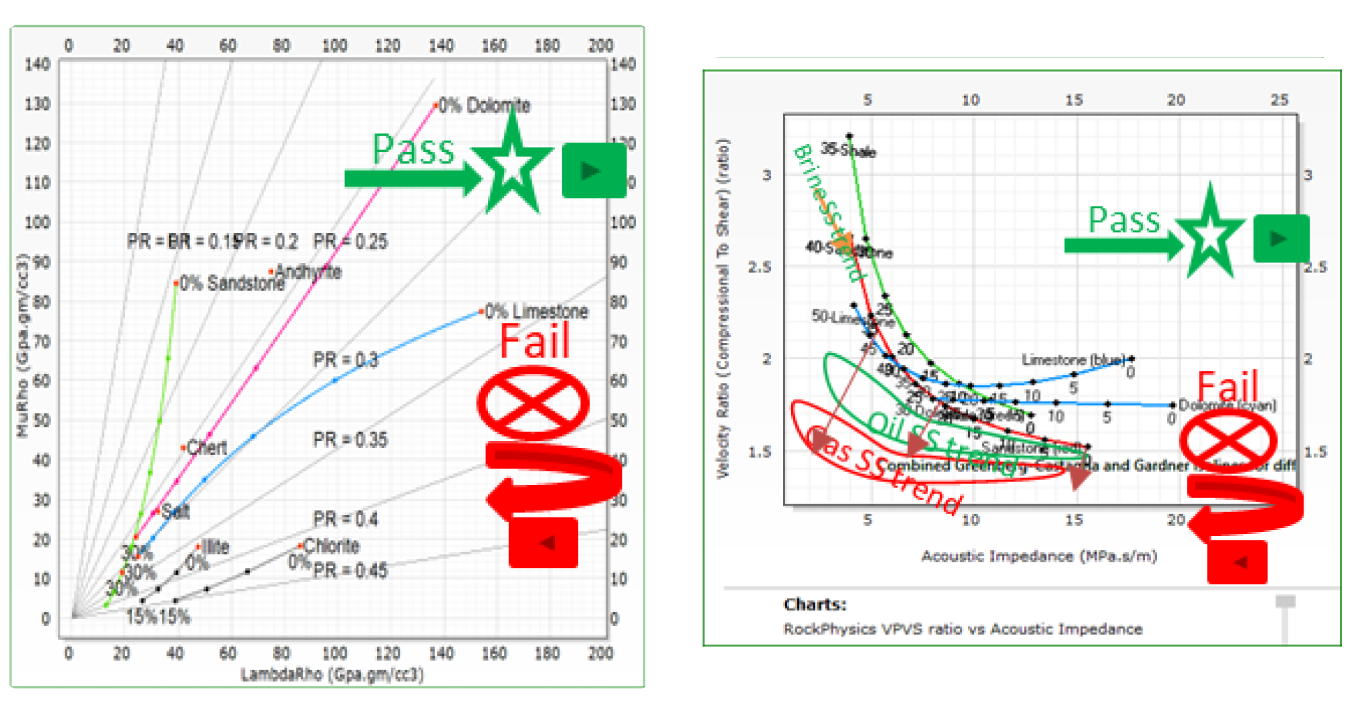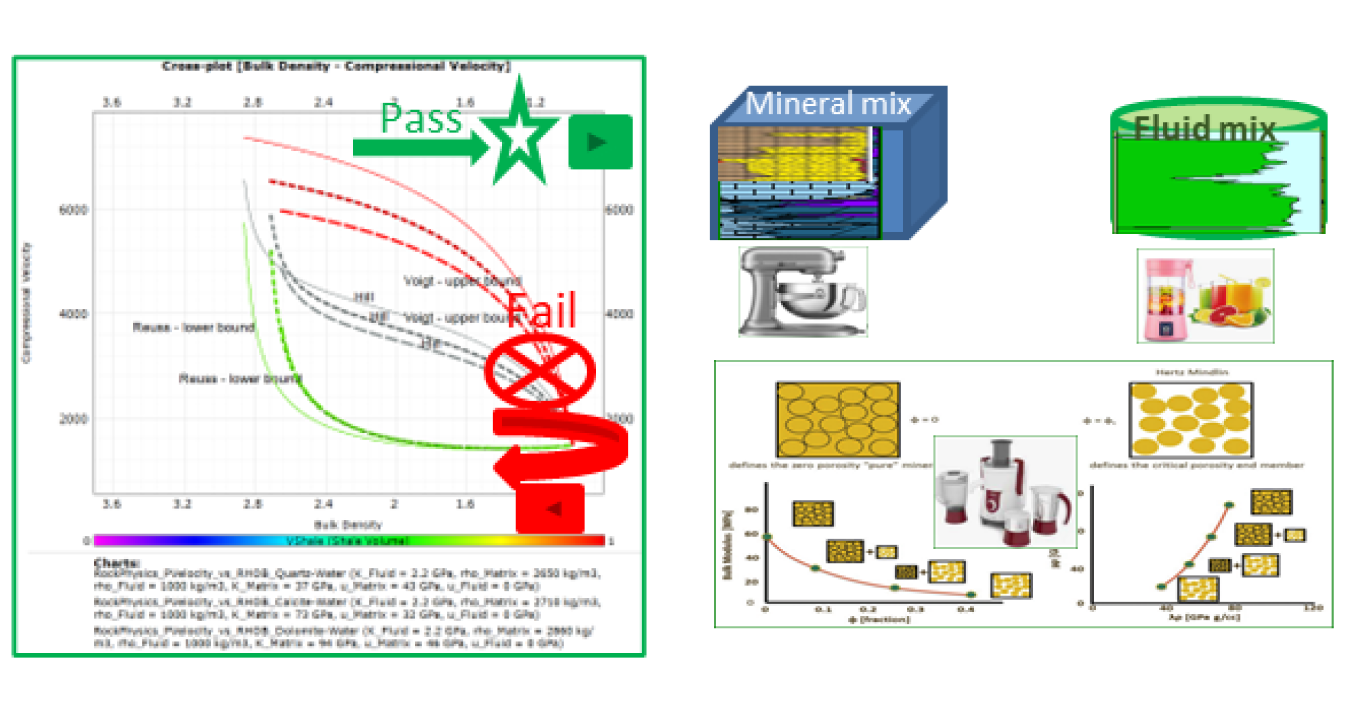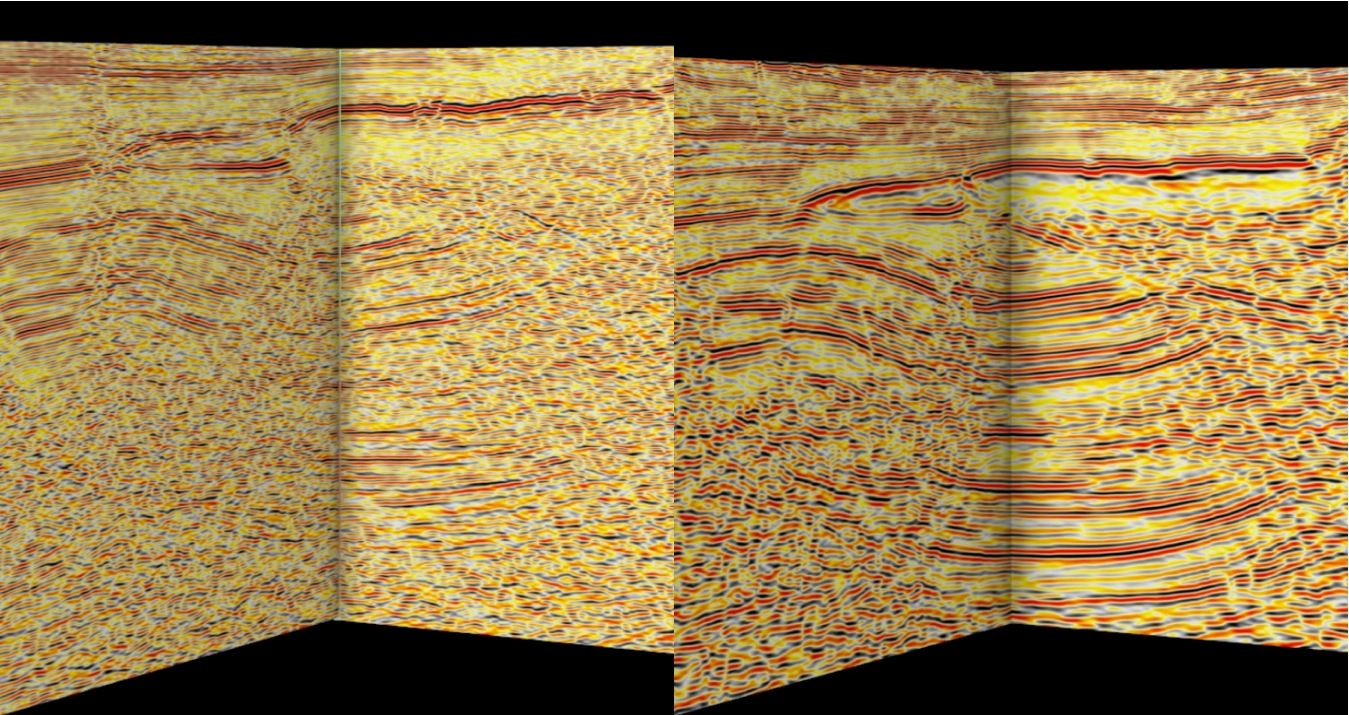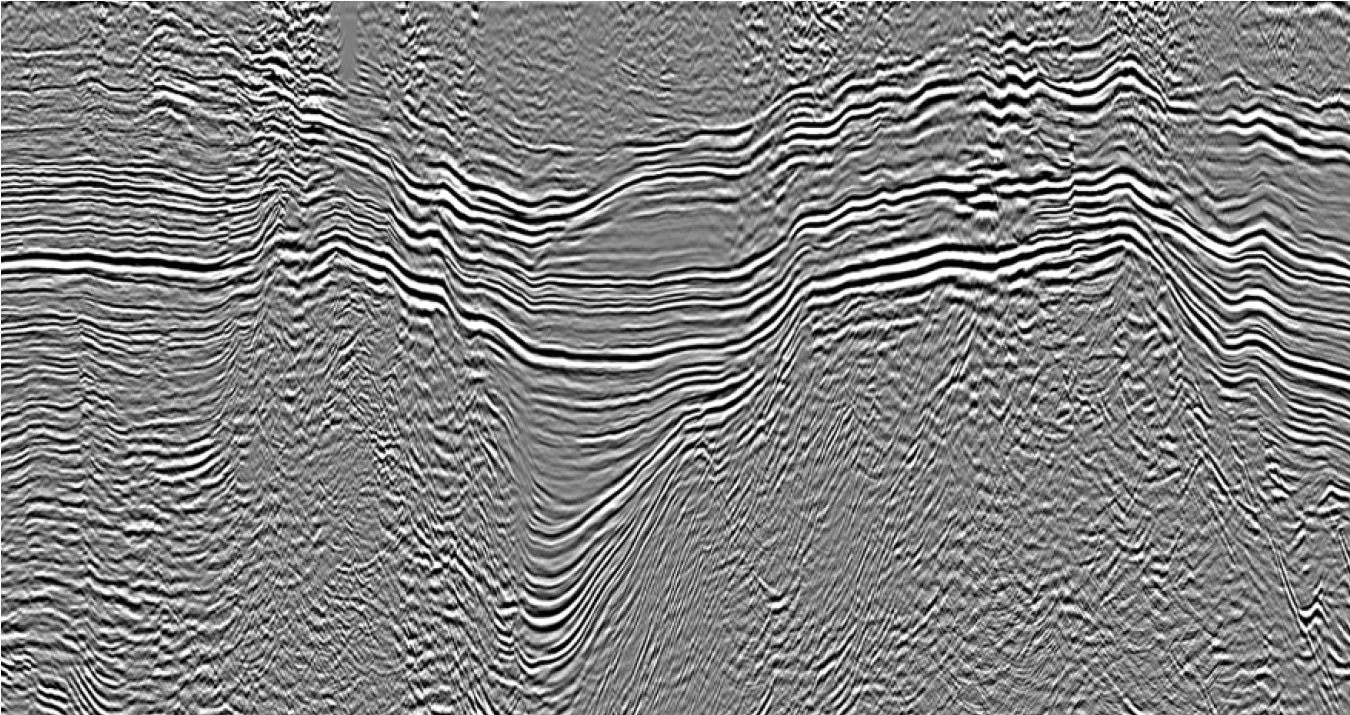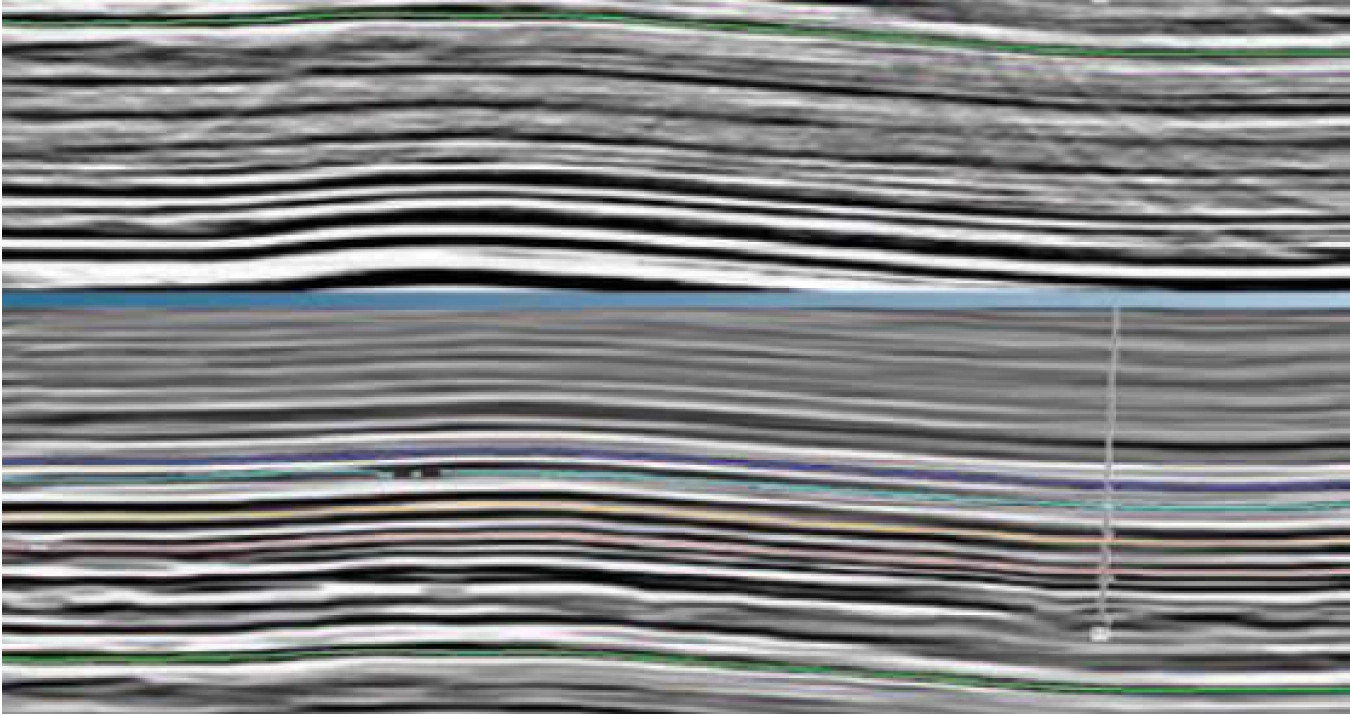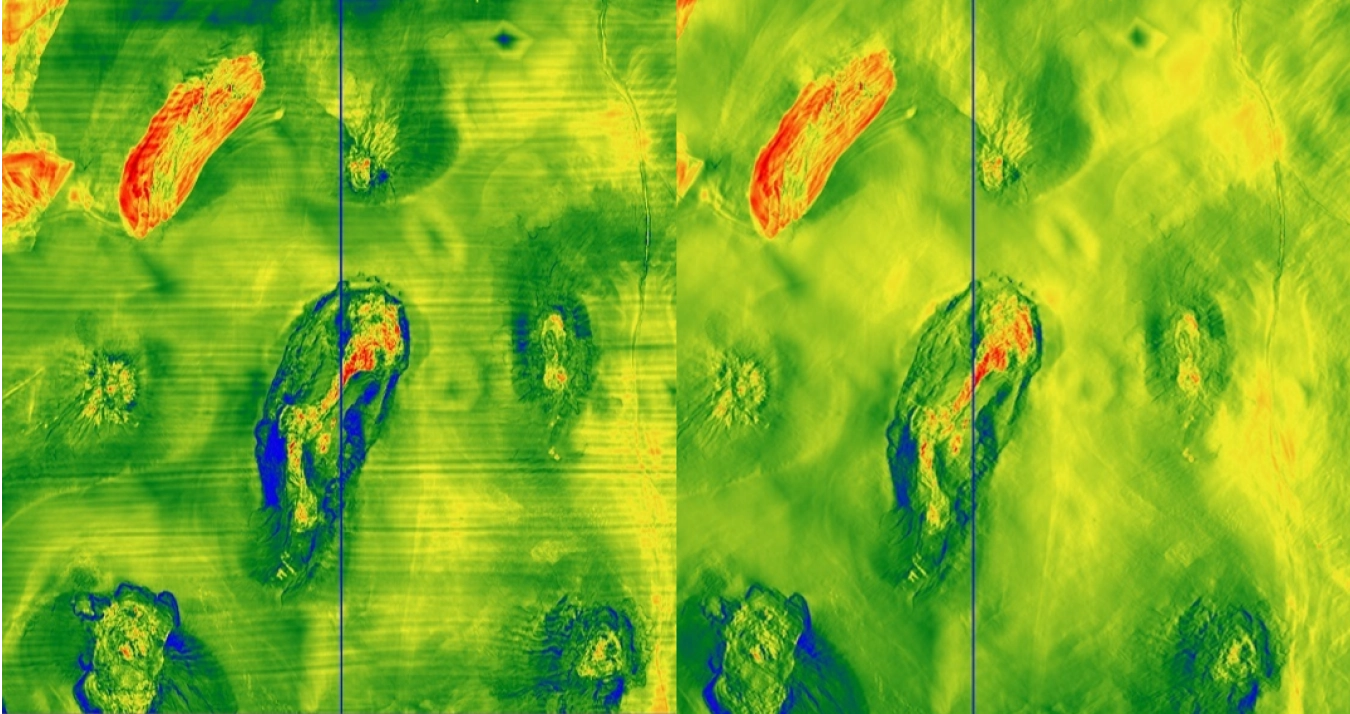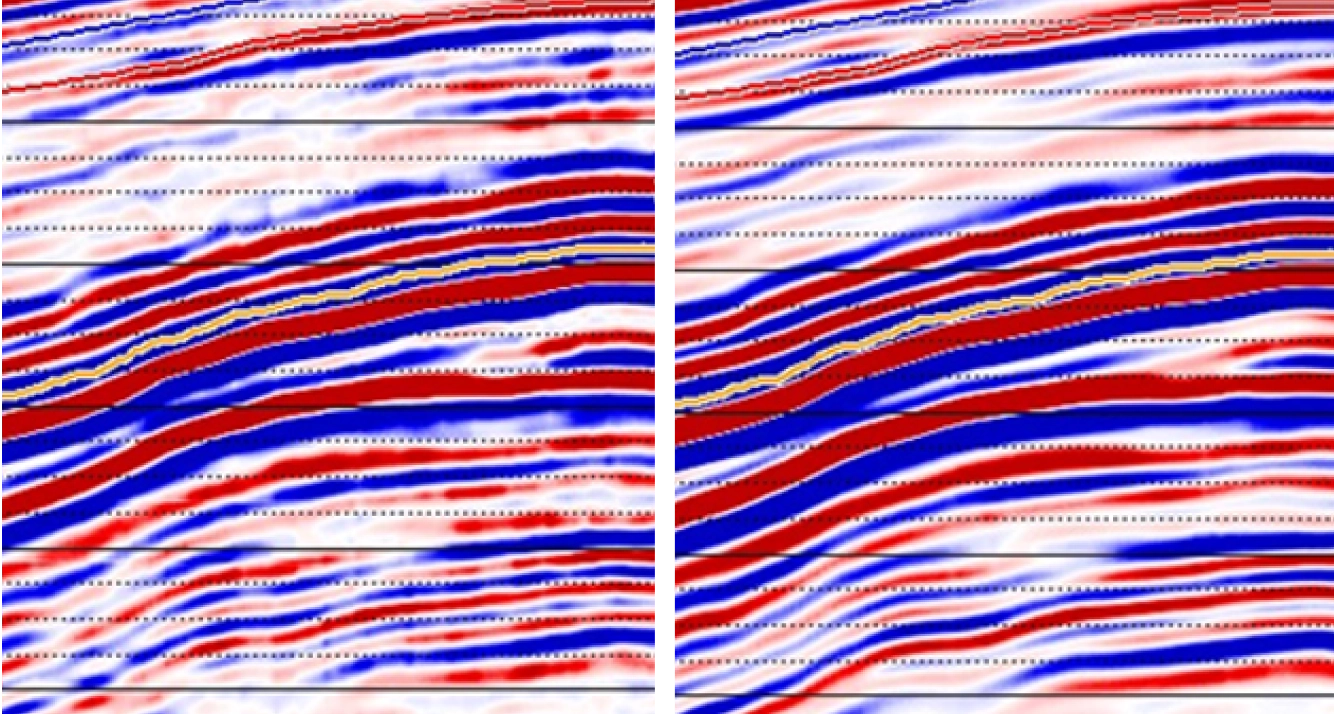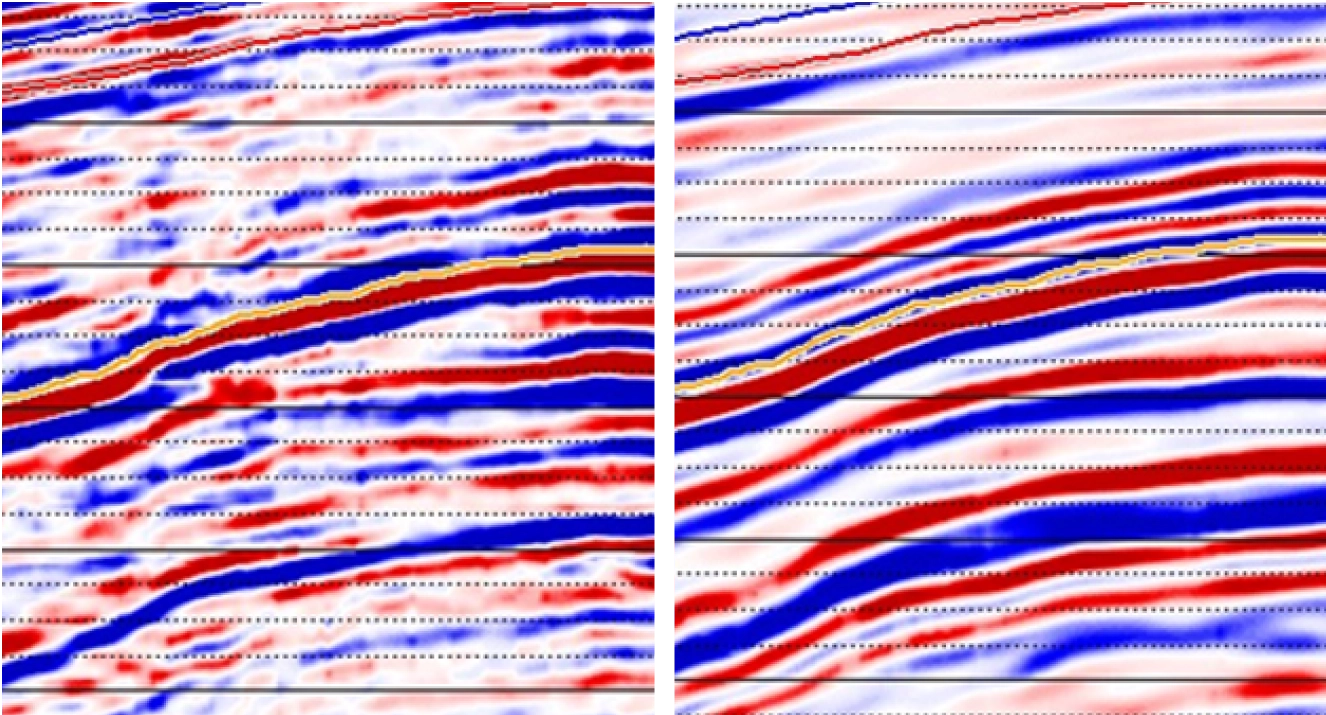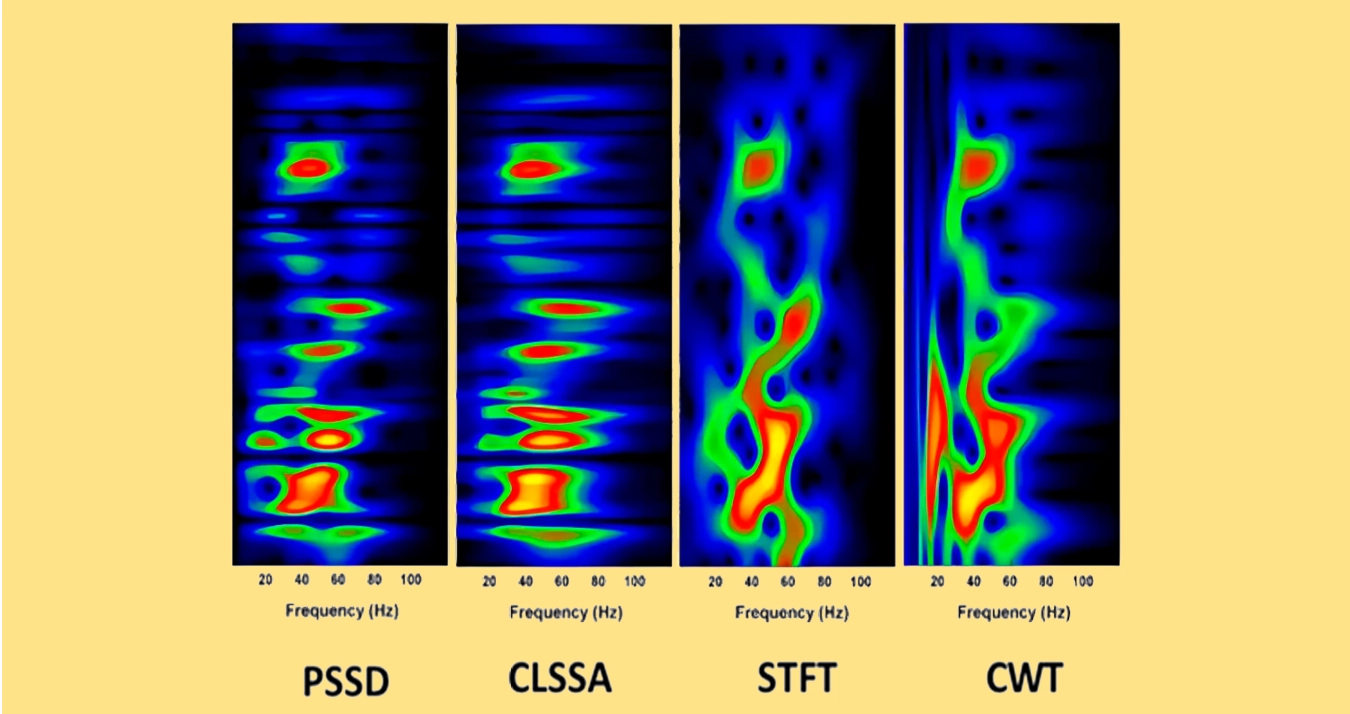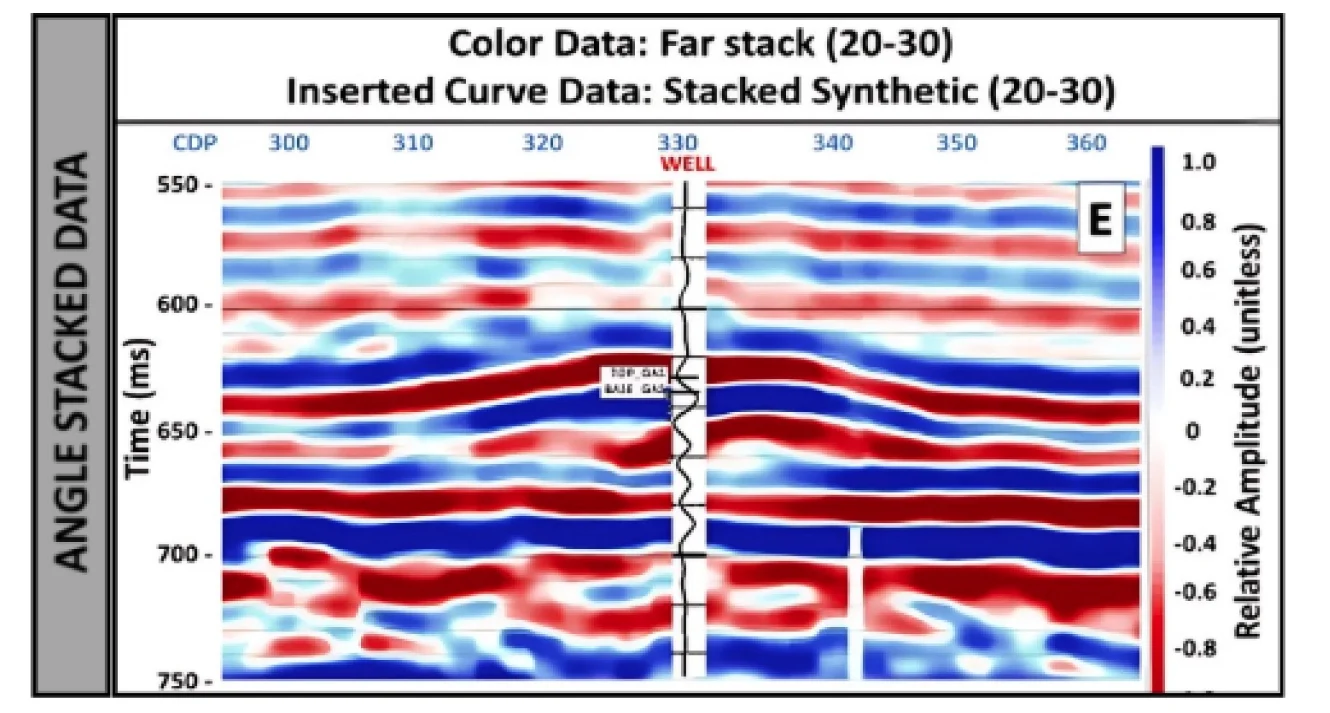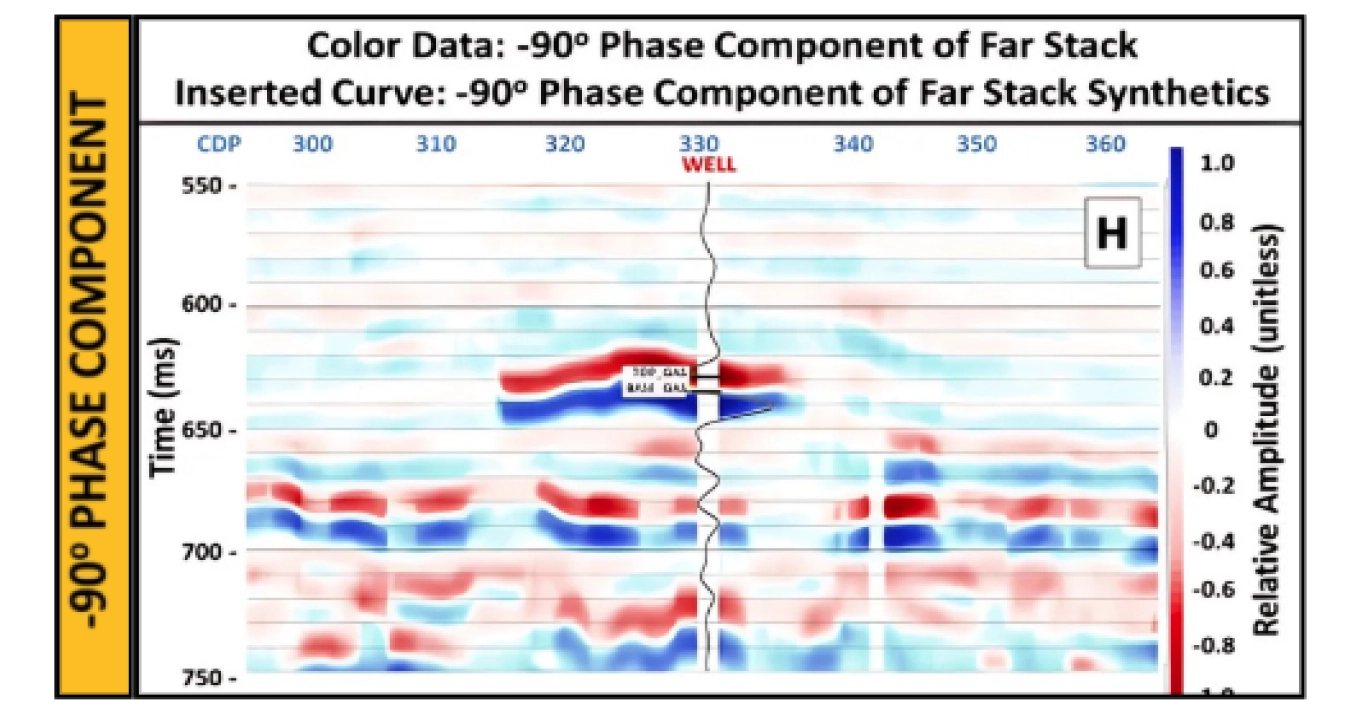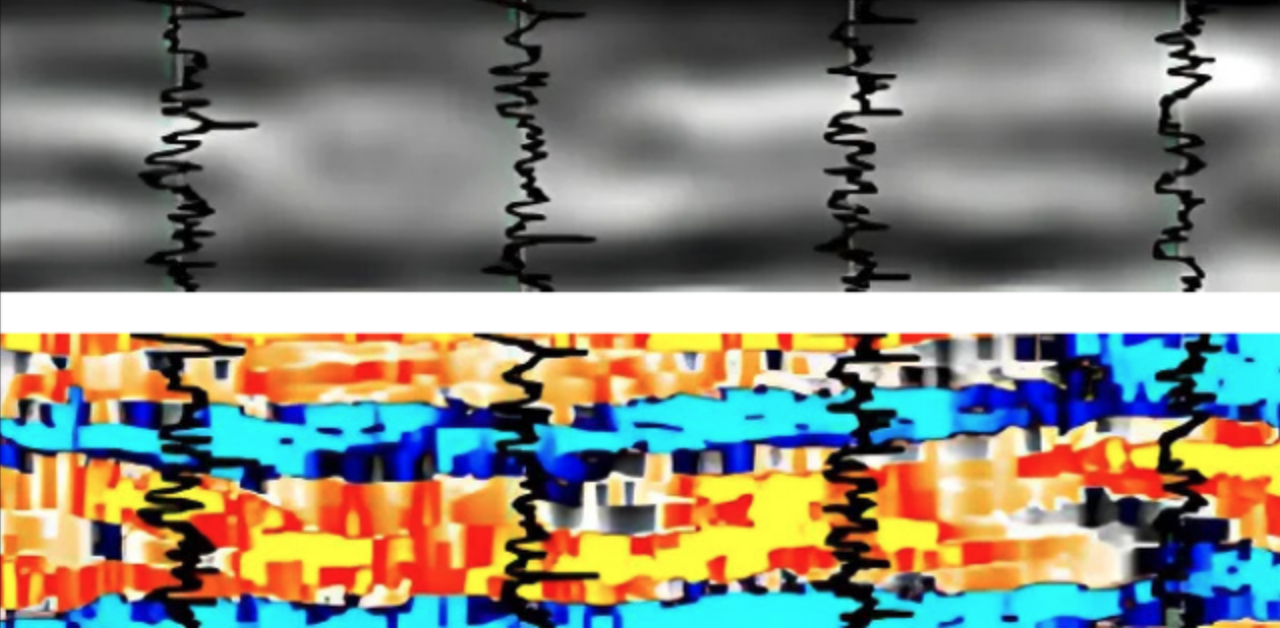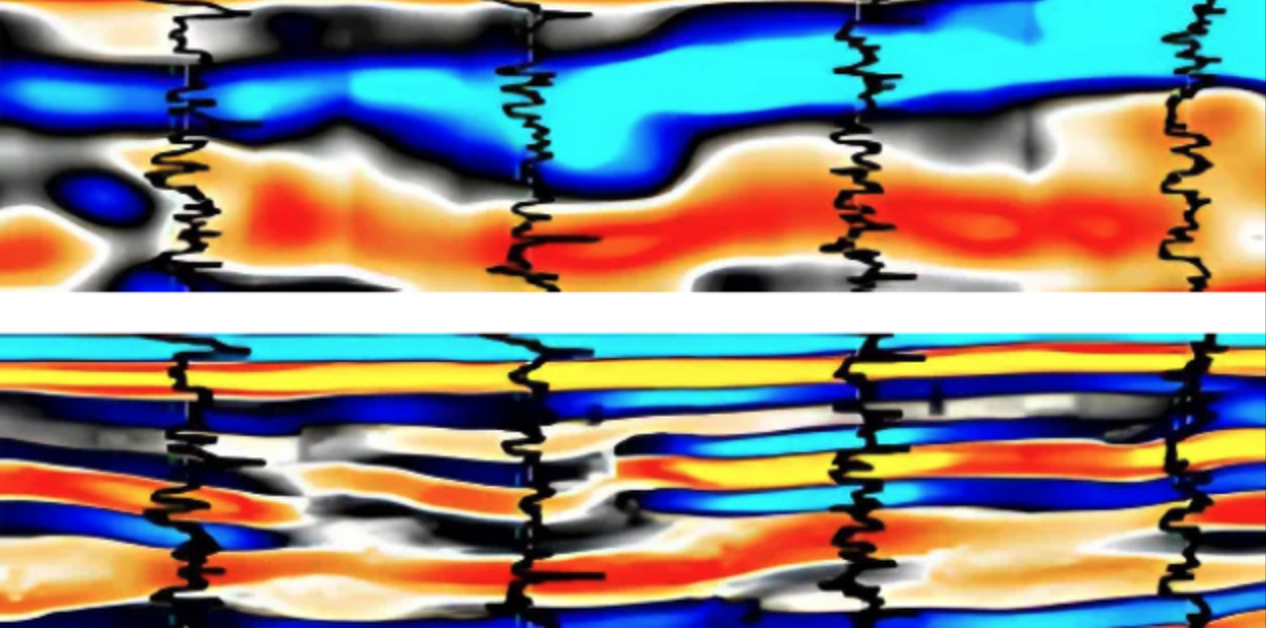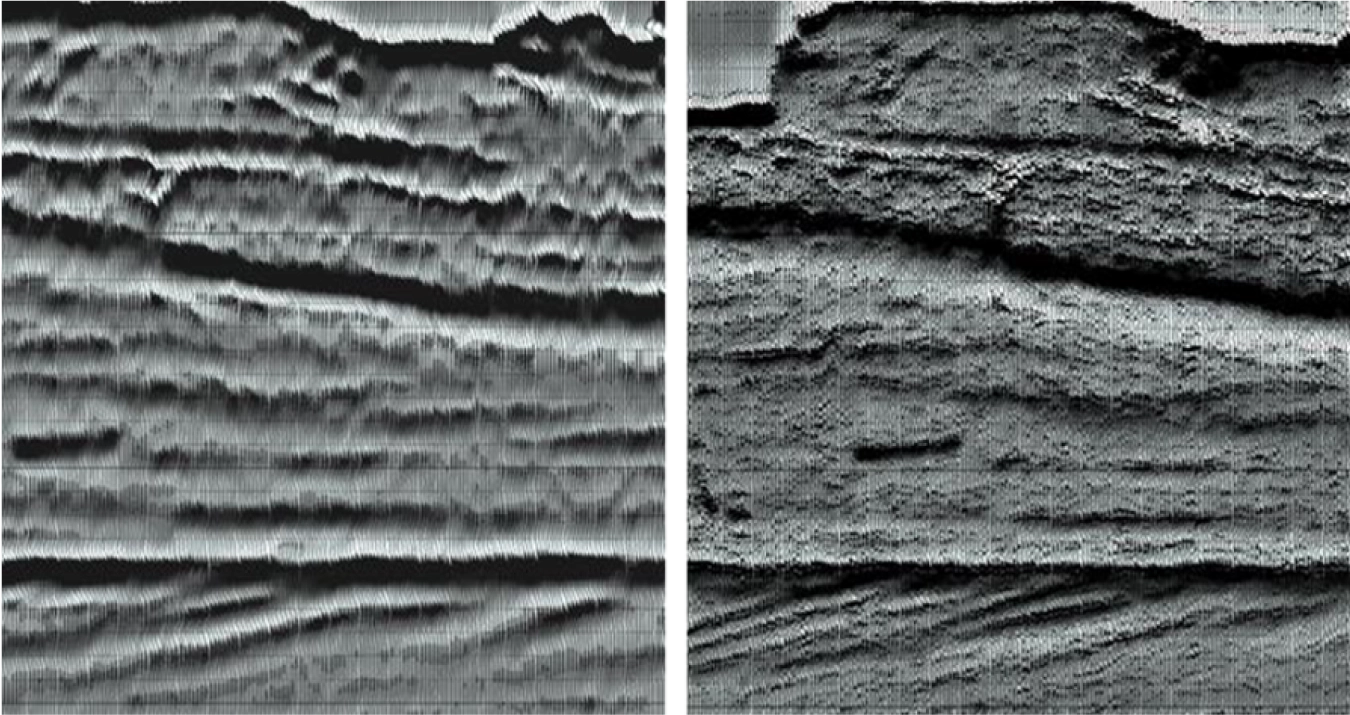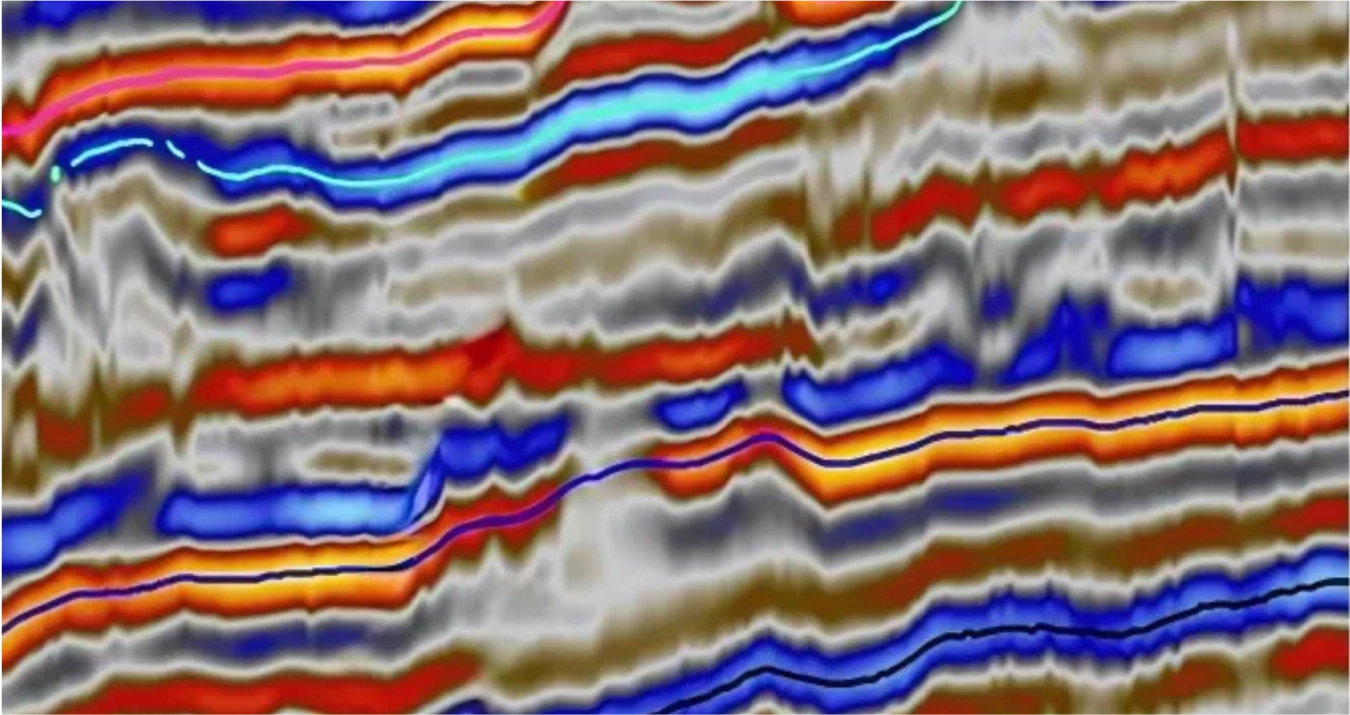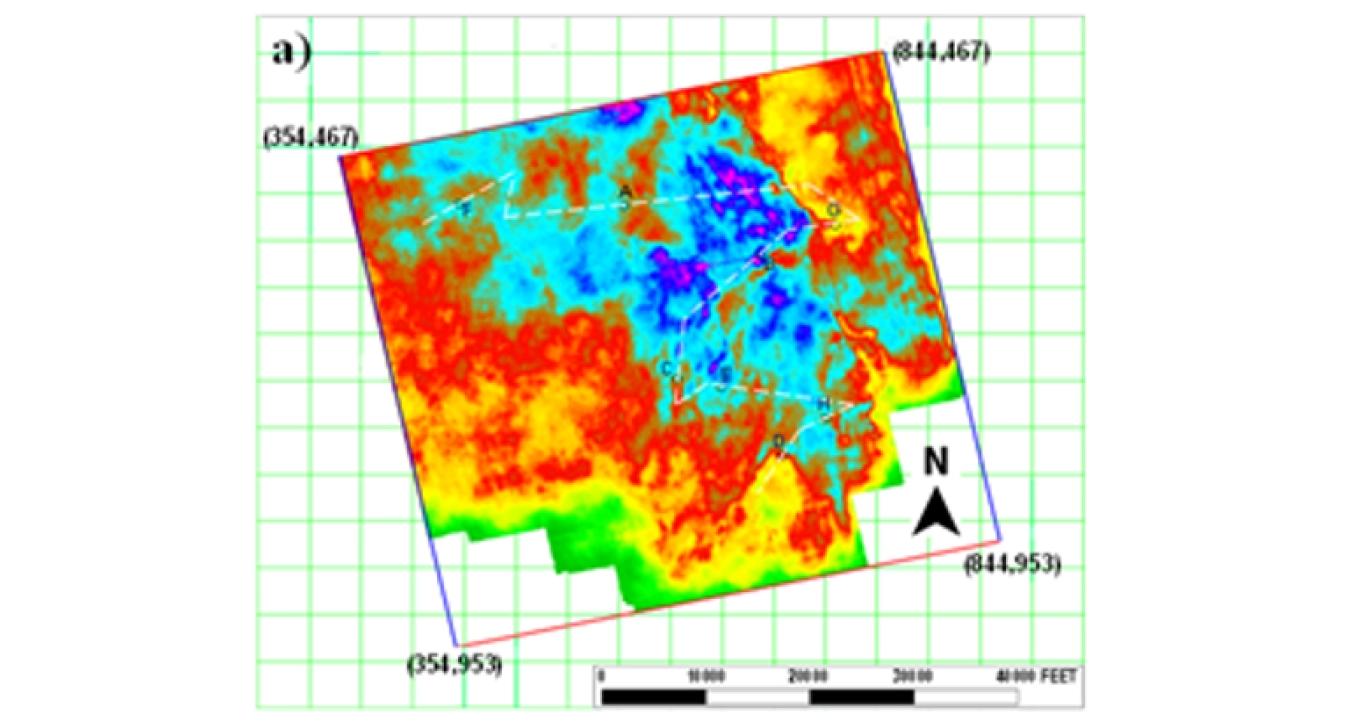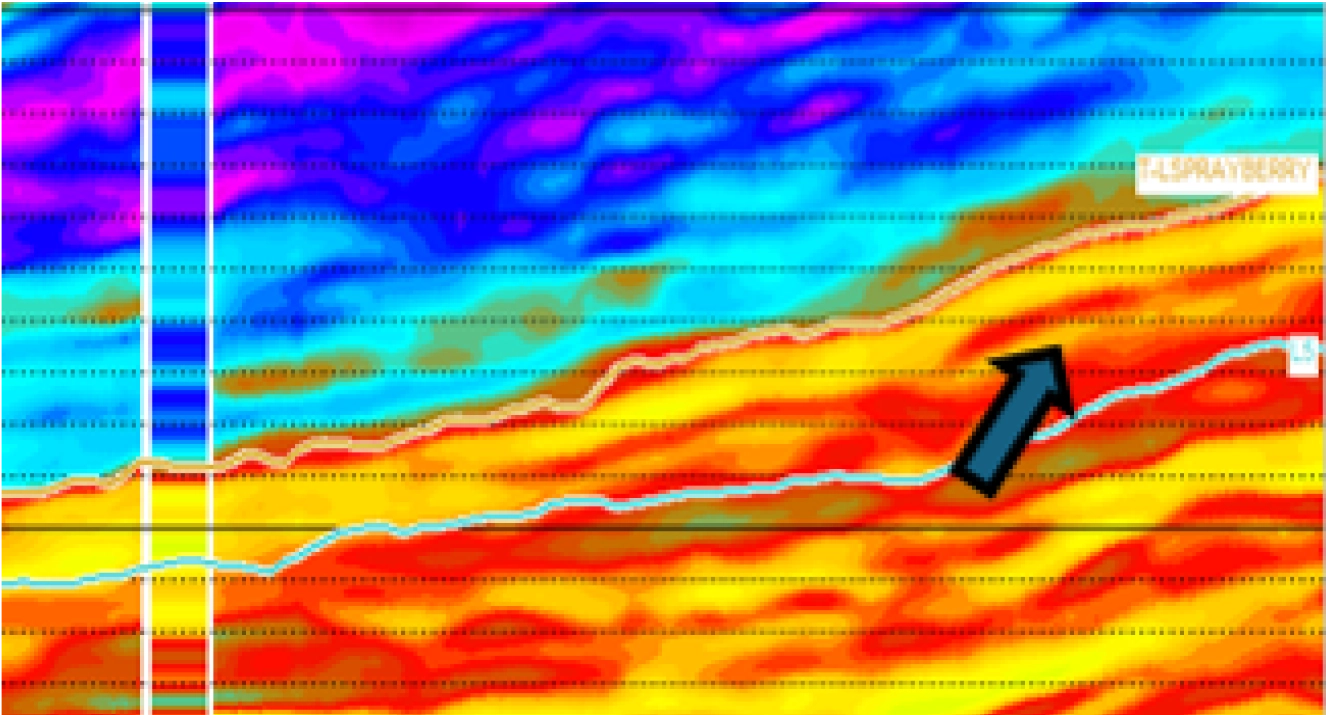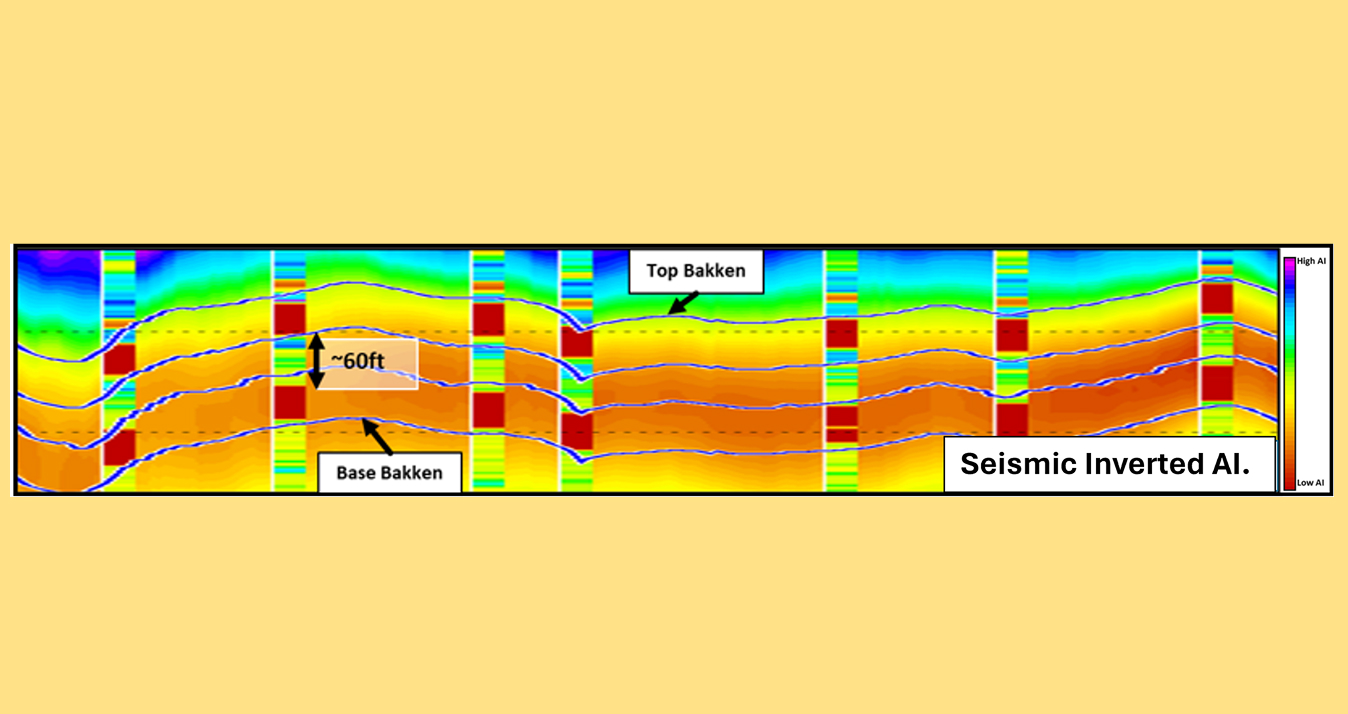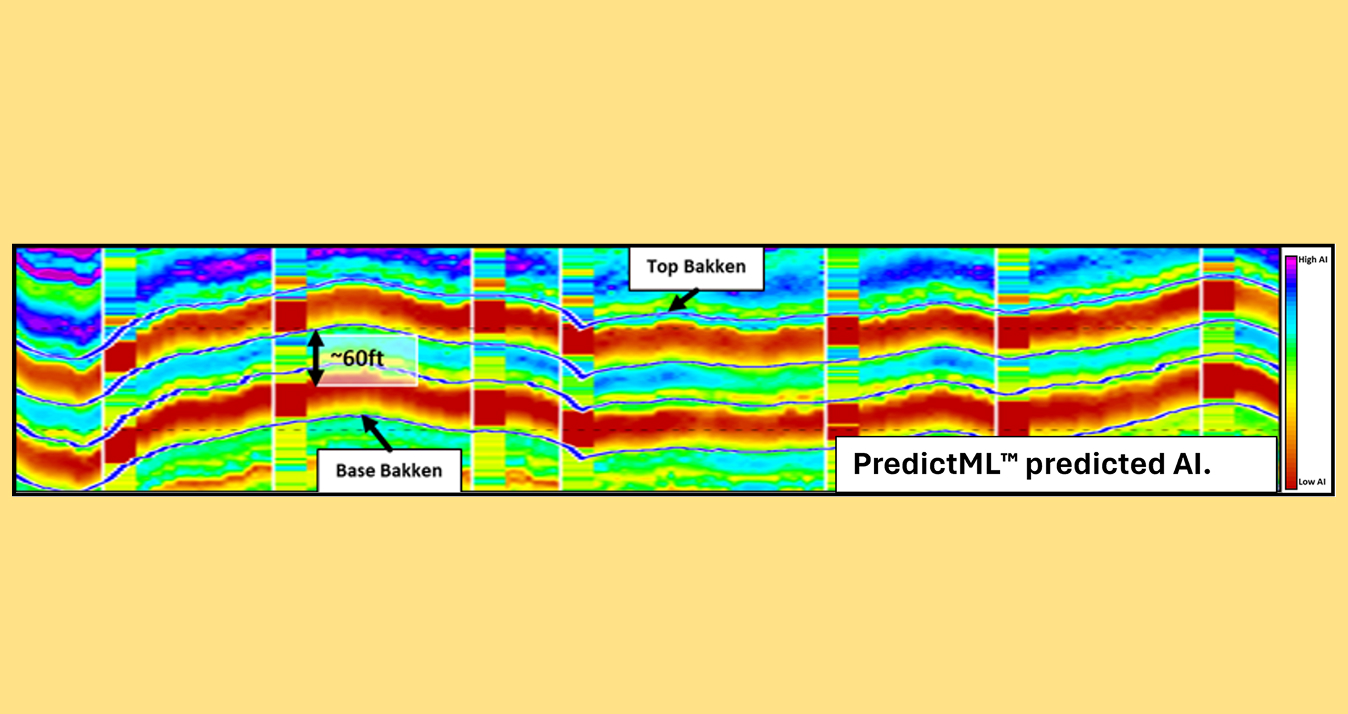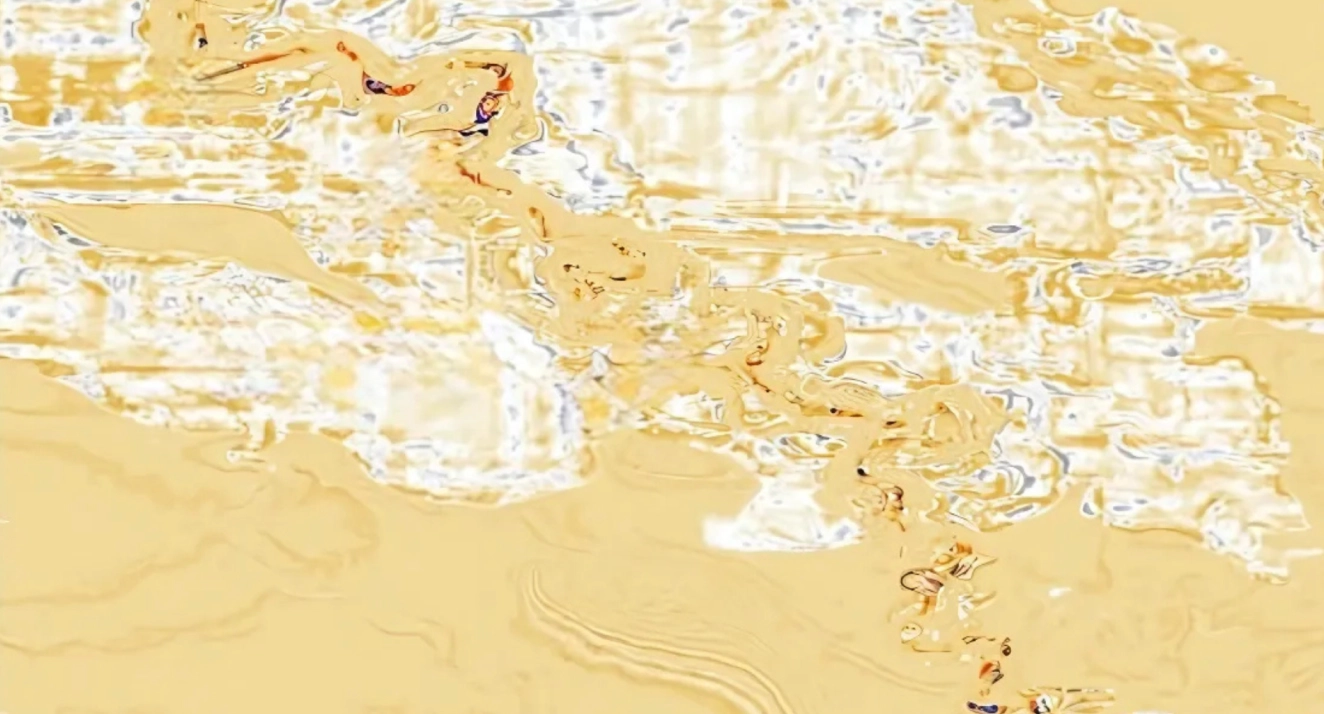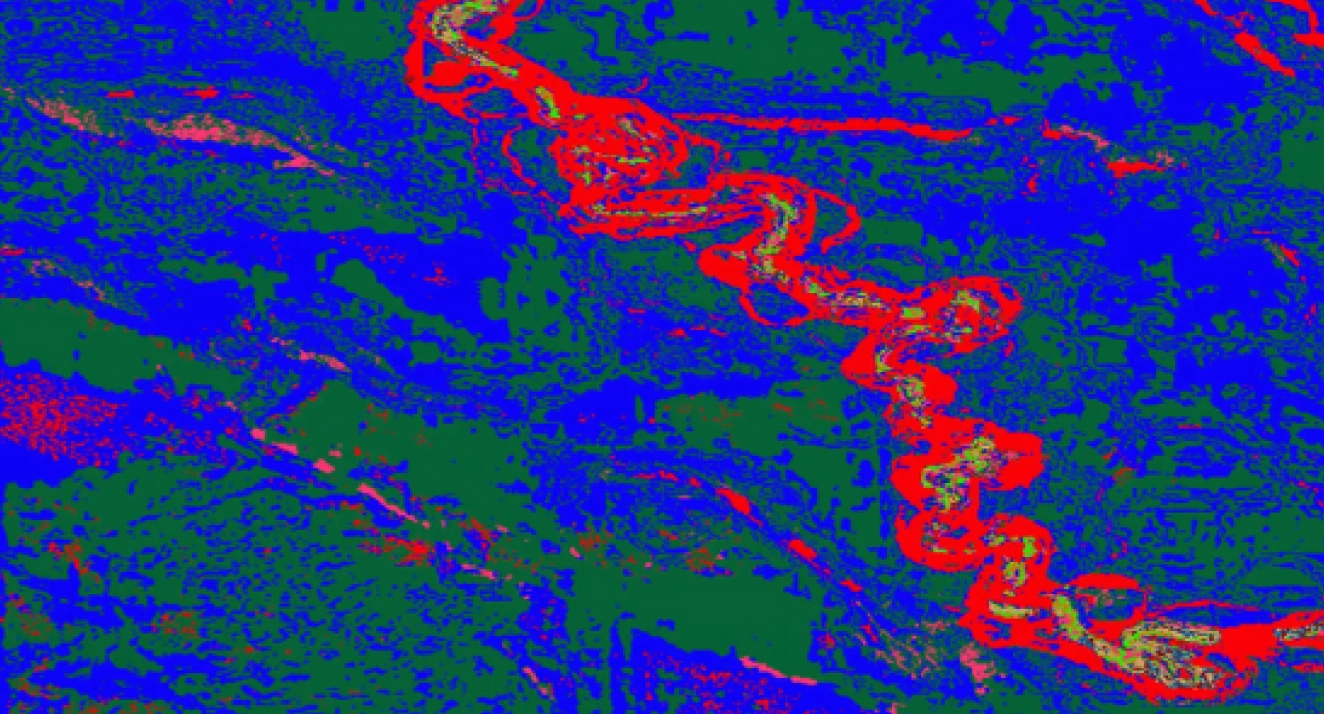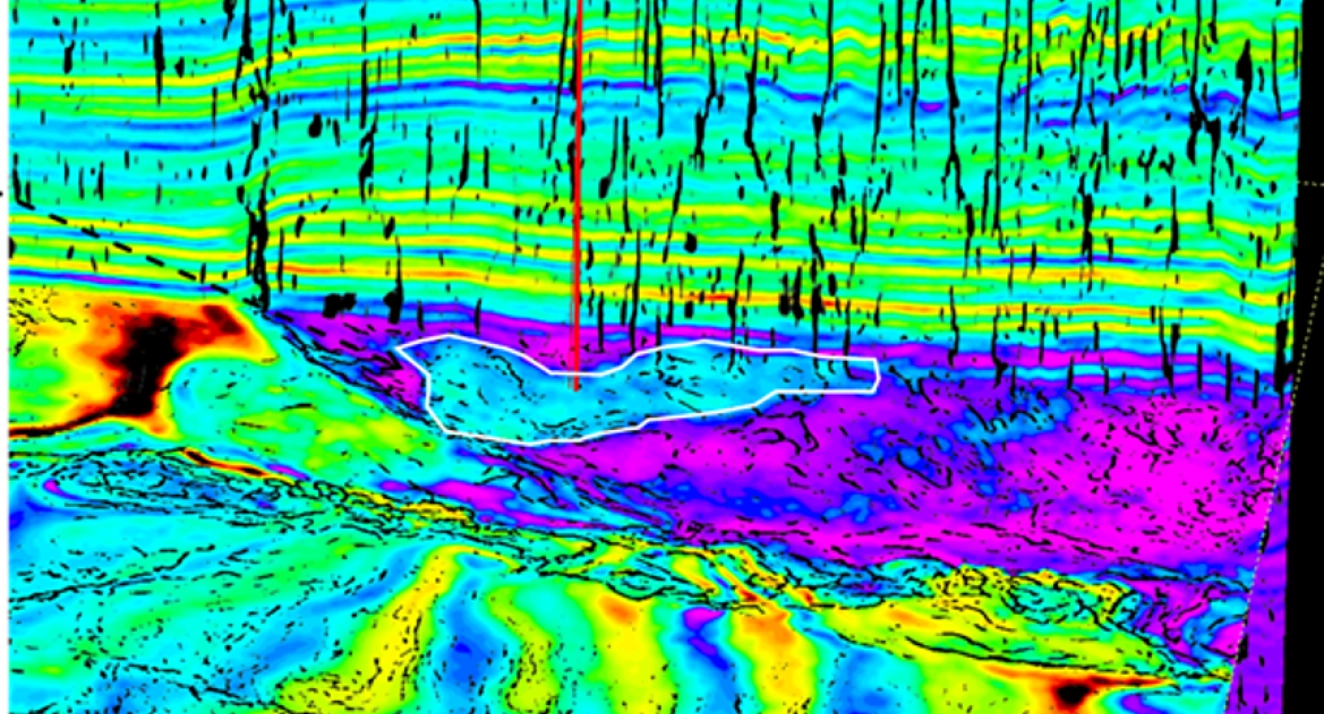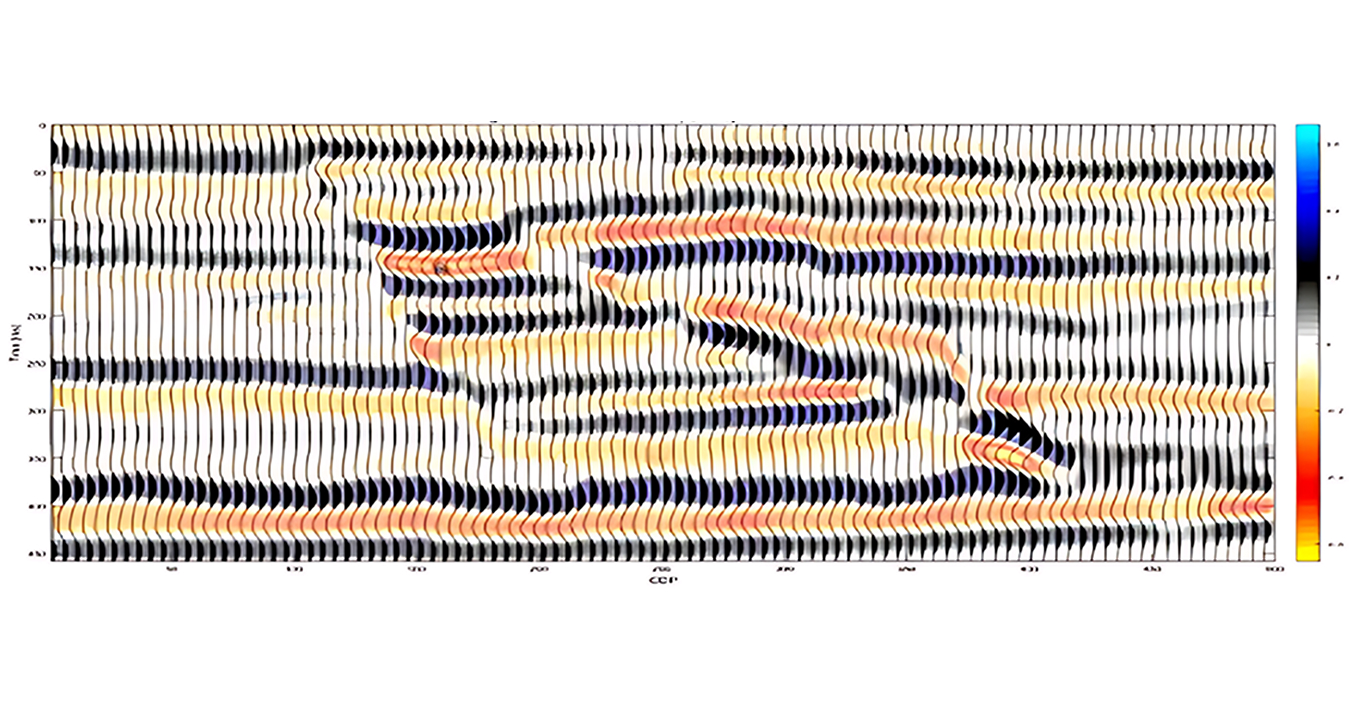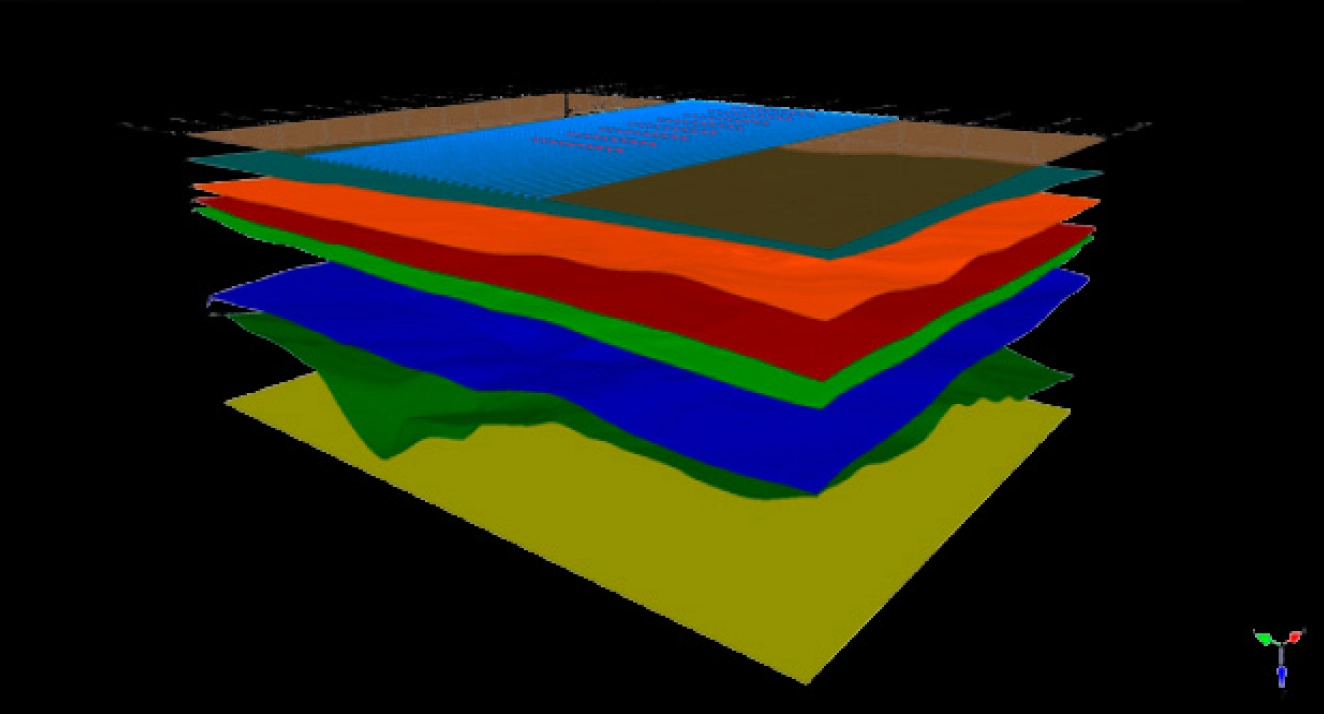Maximize your Knowledge. Optimize your Decisions.
Welcome to Lumina’s Solutions section, where innovation meets excellence. We are committed to delivering advanced solutions tailored to your unique business needs.
With Lumina, you can expect high-quality solutions and personalized support every step of the way.
Contact us today to discuss exactly how Lumina can help with your geoscience service needs – no matter what they are!
Scroll right
Petrophysical Analysis
Unlock the power of Lumina’s Seismic Petrophysics to elevate your reservoir characterization and decision-making, ensuring precision and reliability every step of the way.
Step into a realm of unparalleled precision and reliability with Lumina’s Seismic Petrophysics. Beginning with meticulous quality control and editing of essential logs, we ensure seamless integration from surface to well total depth, enabling the production of reliable logs for well synthesis. Our dedication extends to field-wide data consistency, guaranteeing uniformity across all wells within the study area. Delving deeper, our detailed multi-mineral petrophysical analysis zooms into the zone of interest, providing comprehensive insights into lithology volumes, porosity, water saturation, permeability, and reservoir summaries. Calibration using core data ensures the utmost accuracy, making Lumina the ultimate choice for informed decision-making in reservoir characterization.
Benefits
Rigorous Quality Control: Meticulously edited logs (DTC, DTS, RHOB) ensure seamless well-to-seismic integration.
Data Integrity and Reliability: Discrepancies are swiftly addressed for uniformity across study areas.
Comprehensive Petrophysical Analysis: Detailed zone analysis calculates lithology volumes, porosity, water saturation, and permeability.
Precision Calibration: Core data calibration ensures accuracy and informed reservoir characterization.
Enhanced Modeling: Reliable outputs improve rock physics modeling and reservoir management.
Rock Physics
Revolutionize your reservoir understanding with Lumina’s Rock Physics workflow, a precision-engineered solution that seamlessly integrates raw measured logs, advanced analysis techniques, and tailored workflows to deliver unparalleled insights for informed decision-making.
Embark on the forefront of reservoir analysis with Lumina’s Rock Physics workflow. By harnessing raw measured logs, advanced multi-mineral petrophysical analysis, and meticulous quality control, we offer a comprehensive understanding of reservoir properties. Trust Lumina to pioneer invaluable insights for optimized reservoir management and exploration strategies.
Benefits
Comprehensive Data Integration: Combining raw logs, petrophysical analysis, core data, and production data for a complete reservoir overview.
Rigorous Quality Control: Logs are meticulously validated against rock physics templates to identify and resolve deviations.
Custom Workflows for Accuracy: Advanced workflows, like Greenberg-Castagna-Gassmann, ensure accurate modeled logs even in complex scenarios.
Iterative Validation: Modeled logs undergo repeated quality checks to confirm alignment with lithology and fluid trends.
Field-Wide Consistency: Uniform rock physics measures ensure reliability across all wells.
Enhanced Reservoir Characterization: Reliable logs support seismic inversion and detailed reservoir analysis.
Precise Rock Classification: Distinct rock classes are accurately identified, improving characterization.
Optimized Elastic Properties: Elastic property selection sharpens insights into reservoir properties.
Seismic Processing
Unlock the potential of seismic data with Lumina’s cutting-edge processing solutions. Discover more with Lumina!
Lumina is your trusted partner for premium seismic processing services. With over 20 years of unparalleled expertise in seismic processing across the globe, we bring a wealth of knowledge and proficiency to every project we undertake. Whether you’re dealing with state-of-the-art 3D data or vintage, complex 2D datasets, Lumina is here to deliver the exceptional quality you demand.
Benefits
Extensive Expertise: Over 20 years of global seismic processing experience ensures premium quality for all project types.
Versatile Data Handling: Specialized in processing advanced 3D datasets and challenging vintage 2D datasets, including hard-copied Observer Reports.
Tailored Workflows: Customized processing solutions address the unique requirements of each project, regardless of data age or complexity.
Personalized Service: Client-specific needs are met with meticulous attention to detail throughout the processing stages.
Dedication to Quality: Consistently exceptional results unlock the full potential of seismic data for informed decision-making.
Innovative Solutions: Advanced techniques and technologies drive continuous improvement and deliver cutting-edge results.
Data Conditioning
Lumina’s conditioning offers a robust suite of QC tools and amplitude preserving processes for comprehensive data analysis.
Improve your interpretation by using Lumina’s Technology to condition your seismic data, achieving better structural detail, more robust inversion of elastic attributes, and superior prediction of your reservoir properties.
Lumina’s seismic conditioning introduces a state-of-the-art suite of QC tools tailored for comprehensive data analysis. The platform’s ability to swiftly test and define customized conditioning sequences, whether for pre-stack or post-stack seismic data, enhances its flexibility and efficiency across diverse seismic analysis workflows. Lumina’s approach ensures high-quality data processing and interpretation with a focus on preserving amplitudes and improving overall accuracy.
Benefits
Edge-Preserving Structural Features: Preserve data integrity while highlighting critical structural details.
Time-Offset Variant Radon Filter: Remove noise effectively and improve data quality.
AVO Filters: Leverage seismic-driven modeling for enhanced amplitude variation with offset (AVO) analysis.
Custom Data Conditioning: Quickly design and test sequences for pre- and post-stack seismic data.
QI™ Module Benefits: Create scalable custom workflows, retain true amplitudes, and produce superior inputs for advanced analysis, ensuring accurate, detailed insights.
Adaptive Multiple Suppression
Maximize your seismic data quality with Lumina’s Adaptive Multiple Suppression. Attenuate multiples while preserving high frequencies for clearer, more reliable subsurface insights.
Lumina’s Adaptive Multiple Suppression (AMS) offers an advanced method for subtracting modeled interbed multiples from seismic data. By synchronizing actual data with modeled multiples across amplitude, time, phase, and frequency, AMS ensures precise multiple attenuation. It effectively addresses interbed multiples, which are often overlooked but can lead to misinterpretations at reservoir levels. AMS preserves high-frequency energy, crucial for thin reservoir characterization, and enhances well correlation by uncovering subtle seismic details. This process provides a more reliable foundation for Quantitative Interpretation, offering a clearer and more accurate view of subsurface structures.
Benefits
Preserves Full Bandwidth: Retains high-frequency energy for thin-bed analysis.
Precise Alignment: Matches data with modeled multiples accurately.
Protects natural amplitude variations.
Focused Interbed Multiple Attenuation: Targets interbed multiples for clearer reservoir reflections.
Improved Insights: Enhances interpretation with high-frequency preservation.
Reduced Risk: Lowers chances of off-target completions and dry wells.
Better Well Correlation: Improves alignment and continuity between wells.
Accurate Seismic Representation: Maintains natural amplitude variations for reliable subsurface imaging.
Spectral Decomposition
Unlocking Stratigraphic and Structural Insights with higher Time and Frequency resolution.
Lumina’s Spectral Decomposition represents the pinnacle of technological advancement in revealing intricate stratigraphic and structural details. Harnessing the most advanced commercially available methods, our platform empowers users to leverage their data dynamically, meeting diverse demands with unparalleled flexibility.
Whether you need precise lateral or vertical resolution, quantitative analysis, or applications such as inversions and visual color blending, Lumina Spectral Decomposition delivers breathtaking results. Powered by QI™ technology, our platform ensures stunning visualizations and insights that elevate your understanding of subsurface dynamics to new heights.
Benefits
Fast and Robust Algorithms: Proprietary Spectral Decomposition providing increased time and frequency resolution over industry-standard methods.
Intuitive Workflows: Simplifies calculation of conventional and advanced spectral attributes.
Interactive Displays: RBG blending displays.
Higher Resolution Reservoir Characterization: Achieve exceptional time and frequency domain resolution with CLSSA.
Faster Characterization: Simultaneously generate multiple spectral attributes for quicker lithology and hydrocarbon analysis.
Phase Decomposition
Revealing Hidden Insights in Seismic Data. Improve thin layer interpretation and direct hydrocarbon detection by making subtle effects highly visible.
Experience a new level of seismic analysis with Lumina’s Phase Decomposition module, designed to accentuate even the most delicate phase and amplitude anomalies. This innovative tool empowers you to decompose seismic data into distinct phase components, unveiling remarkable phase attributes.
The output goes beyond standard seismic trace displays, revealing features that often escape notice, such as thin beds and bright spots. Lumina’s Phase Decomposition opens a window to previously unseen details, providing invaluable information for a comprehensive understanding of your seismic data.
Benefits
Phase Component Separation: Isolates seismic data into unique phase components for detailed analysis.
Flat Spot & Water Contact Identification: Zero-phase component highlights flat spots and water contacts.
Thin-Bed Detection: Detects thin beds and impedance ramps in 90° phase components for accurate reservoir characterization.
Enhanced Anomaly Detection: Highlights amplitude vs. phase anomalies caused by lithology or pore fluid changes.
Geological Insights: Provides direct access to geological information, aiding carbonate porosity identification.
Improved Thin-Bed Imaging: Detects subtle seismic anomalies in thin layers for clearer imaging.
Superior DHI: Outperforms conventional AVO attributes in hydrocarbon detection.
Bright Spot Interpretation: Makes it easier to interpret bright spots in terms of hydrocarbon content.
AVO
Integrate all types of data. Your most powerful tool for quantitative reservoir description and characterization
AVO analysis is a powerful tool in seismic lithologic analysis, offering significant benefits in terms of accurate lithology identification, hydrocarbon detection, and improved reservoir characterization. Its various features, including advanced crossplotting techniques, statistical analysis, and noise suppression, make it an indispensable method for modern seismic interpretation.
Benefits
Intercept-Gradient Crossplotting
Fluid Factor Analysis: helps to separate the effects of fluid content from those of lithology.
3-D AVO Analysis: Extends traditional AVO analysis into three dimensions, providing a more comprehensive view of the subsurface and improving the accuracy of the interpretation.
Statistical AVO Analysis.
Prestack Imaging: Ensures that the data used in AVO analysis are properly migrated and have a high signal-to-noise ratio, improving the accuracy of the extracted AVO attributes.
AVO Inversion: Involves inverting the AVO data to obtain rock property models, which are essential for accurate interpretation and reservoir characterization.
Enhanced Lithology Identification.
Direct Hydrocarbon Detection.
Improved Reservoir Characterization.
Reduced Exploration Risk.
DeepInvert™
Reflectivity and Band-limited Seismic Inversion with No Wavelet. Enhance thin-layer interpretation and facilitate direct hydrocarbon detection by amplifying subtle effects for greater visibility.
DeepInvert™ challenges conventions by demonstrating that seismic traces can be inverted for reflectivity without relying on a specific seismic wavelet.
DeepInvert™ allows for the extraction of the implied 3D wavelet field. This, in turn, can be used to adjust data phase and estimate Q without contamination from the reflectivity spectrum.
Benefits
No Training Required: No extensive training needed for use.
No Well Logs Needed: Eliminates reliance on well logs for interpretation.
No Synthetic Tie: Utilizes real data for greater accuracy.
No Wavelet Extraction: Eliminates wavelet extraction, providing quick access to band-limited impedance volumes free of uncertainties.
No Earth Model Needed: No need for a pre-built earth model for inversion.
No Time-Depth Adjustment: No editing or adjusting of well ties required.
No Parameters Required: No parameters necessary for the inversion process.
Reflectivity Focus: Seismic traces in, reflectivity out for clearer results.
Improved Vertical Resolution: Offers better vertical resolution compared to conventional band-limited inversion methods, providing more detail about the reservoir.
Better Subsurface Representation: Delivers impedance sections with fewer artifacts, improving subsurface reflectivity series and reducing issues related to wavelet side lobes.
Sparse Layer Inversion
Elevating Seismic Resolution. The whole spectrum for thin layers can be recovered with Lumina’s Sparse Layer Inversion.
Lumina’s Sparse-Layer Inversion is a meticulous trace-by-trace process harnessing spectral information within seismic traces to craft precise layer models that align seamlessly with the seismic data.
Using geophysically sound fundamentals, the resulting layer models yield a high-resolution band-limited seismic section, effectively doubling the bandwidth of the original data. This enhancement ensures that even the subtlest details are captured, offering a comprehensive view of your seismic landscape with unparalleled clarity and accuracy.
Benefits
Reveal Hidden Reservoir Features: Uncover reservoir features that were previously hidden, providing crucial insights into factors impacting productivity and well performance.
Increase Seismic Resolution: doubling (or even more) the resolution of both pre-stack and post-stack data, offering unparalleled clarity and detail.
Versatile Applications: Ideal for exploration endeavors with limited well control, Lumina’s Sparse-Layer Inversion is also highly applicable in mature fields. It aids in identifying and characterizing reservoir heterogeneities, thereby improving reservoir characterization and optimization efforts across various operational contexts.
User-Friendly Interface. No prior model, reflectivity assumptions, horizon constraints, well information, or wavelet extraction are required, ensuring simplicity and efficiency.
Optimized Testing: While the process may require initial testing for optimal results, its flexibility allows for fine-tuning to suit your specific needs, ensuring the best outcomes for your seismic analysis.
Reflectivity Decomposition
Unmasking subtle geological features hidden by vertical interference. The whole spectrum for thin layers can be recovered with Lumina’s Sparse Layer Inversion.
Detailed reflectivity inversion is used to surgically remove the effect of larger impedance contrasts, revealing the seismic signature of reservoir responses given by subtle impedance changes, otherwise masked by vertical interference.
Reflectivity decomposition can separate weak and strong reflections, allowing for the clear imaging of weak reflectivity targets such as porous carbonates.3
Benefits
Subsurface Reflectivity Access: Provides direct access to valuable subsurface reflectivity information.
Customizable Regional Event Removal: Tailor the removal of regional events to highlight subtle reflectivity features.
Amplitude Map Generation: Create amplitude maps that show property variations in the reservoir interval, free from regional event interference.
Prospective Area Identification: Detect potential areas that conventional seismic may miss.
Improved Reservoir Interpretation: Enhance interpretation of reservoir thickness, extension, and quality for more accurate analysis.
Blade™ Pre-Stack Model-Based Simultaneous Elastic Inversion
Unique high resolution pre-stack inversion for analysis and quantitative interpretation of your reservoir. Transform your seismic data into actionable insights with Lumina’s Simultaneous Elastic Inversion.
Experience a revolution in subsurface modeling with Lumina’s simultaneous elastic inversion, which extracts elastic properties from seismic gathers in one comprehensive process. Your inverted results will have a solid geological foundation, aligned with local rock physics responses for precise and meaningful interpretation. The inverted elastic volumes provide valuable insights for reservoir interpretation and characterization, enabling you to distinguish between lithological and fluid effects with confidence.
Lumina’s intelligent approach streamlines the process, offering a faster and more efficient alternative to complex manual methods. By automatically calculating weights based on available incidence angles, it simplifies parameter selection for smoother operations. Robust, rock physics-consistent low-frequency models can be generated through a straightforward workflow. This, paired with interactive QC tools, ensures highly interpretable and geologically accurate inversion results.
Benefits
Effortless Access to Rock Physics-Constrained Elastic Inversion: Seamlessly perform simultaneous elastic inversion with a strong foundation in rock physics for reliable results.
Automated Data-Driven Weighting for AVA Inversion: Simplify your AVA inversion process with automatic weight calculations based on data-driven insights for streamlined analysis.
Quickly and accurately characterize your reservoir.
Enhanced Reservoir Understanding: Differentiate between lithological and fluid effects.
Optimized Interpretation of Unconventional Reservoirs: Calculate reservoir properties such as brittleness for improved analysis and interpretation, even in unconventional reservoirs.
Predict Additional Reservoir Properties: Leverage QI’s Multi-Attribute Analysis module to effortlessly predict a range of reservoir properties using your results.
Maximized Resolution and Accuracy: Combine with QI’s Bandwidth Extension and other modules to achieve higher resolution and more precise interpretation.
Blade™ Post-Stack Model-Based Inversion
Unique high-resolution post-stack inversion for analysis and quantitative interpretation of your reservoir.
Lumina’s Inversion process empowers you to derive geologically meaningful acoustic properties from seismic traces at both conventional and extended resolutions. This advanced technology ensures optimal inversion results in every scenario, thanks to interactive applications for low-frequency model building and inversion parameterization QC.
Achieve superior correlation between inverted properties and well logs, enhancing the accuracy of your interpretations. The robust amplitude scaling implemented in the inversion algorithm minimizes seismic amplitude scale effects, delivering reliable results every time.
With Lumina’s inversion, you gain access to more detail and higher resolution from seismic traces than traditional methods, all at a faster pace.
Benefits
Versatile Data Inversion: Invert any type of post-stack data, including AVO attribute volumes and elastic impedance.
Fully Integrated Viewers: Provide easy setup and optimization with integrated viewers.
Fast and Optimized Algorithm: Quick, optimized algorithm for both conventional and high-resolution input and output.
Tailored Results: Customize your analysis to meet the unique needs of your data and objectives. QI™’s robust low-frequency model approach enables you to extrapolate any desired log type for targeted insights.
User-Friendly Setup: Experience a seamless setup with intuitive parameter selection and a straightforward interface that streamlines your workflow.
Enhanced Accuracy and Resolution: Elevate your interpretation quality by combining QI™’s Bandwidth extension and other modules for higher resolution and precise results.
PredictML ™ Lumina’s Advanced Machine Learning
PredictML™ is revolutionizing seismic reservoir characterization. Revolutionizing Reservoir Property Prediction.
Lumina Predict ML platform represents a groundbreaking leap in reservoir property prediction, leveraging a sophisticated multi-attribute analysis approach. Seamlessly integrating seismic data and well information, our platform employs intelligent and robust methodologies to deliver high-resolution predictions of reservoir properties.
By harnessing the power of advanced machine learning algorithms, Lumina’s PredictML goes beyond traditional methods, offering unparalleled accuracy and insight into reservoir characteristics. Our platform ensures that seismic data and well information are combined in an optimal manner, enabling users to make informed decisions with confidence and precision.
Benefits
More informed & accurate decisions: Integration of seismic, well, and production data. Prediction of the distribution of rock properties.
More accurate field planning & geosteering: Sophisticated multi-attribute property prediction. Detailed reservoir property volumes. More accurate well planning, optimal landing zones.
Ease of Use: Streamlined implementation of the prediction process. Fast and robust solutions for interpreters and engineers.
Stratify™
Gain unparalleled insights into your reservoirs for smarter exploration and development! Revolutionizing reservoir facies classification.
Stratify offers the power to generate seismic facies maps using just a single input attribute, streamlining your analysis process. To uncover the geological significance of each facies, these maps are correlated with local well data.
By aligning Stratify’s outputs with well data and known lateral lithological changes, you can effectively reduce the number of output facies through reclassification and merging. This tailored approach enhances your ability to interpret seismic data with precision and confidence, paving the way for more accurate subsurface insights.
Benefits
Single Attribute Mapping: Quickly generate seismic facies maps from a single input attribute.
Well Data Correlation: Link facies maps to well data for enhanced geological interpretation.
Facies Reclassification: Customize maps by reclassifying and merging facies for tailored results.
High-Resolution Maps: Produce detailed insights into subsurface geology.
User-Friendly Interface: Simplifies mapping and interpretation with an intuitive design.
Versatile Application: Applicable across diverse geological settings and scenarios.
Streamlined Mapping: Saves time and resources with efficient facies mapping.
Improved Subsurface Insights: Offers clearer views of structures and lithologies.
Enhanced Geological Understanding: Provides deeper context by integrating well data.
Confident Interpretation: Delivers precise facies maps for better exploration and production strategies.
FaultCube™
Redefining Precision in Fault Analysis. Perform high quality fault imaging.
Lumina Fault Detect stands out as an unparalleled tool, harnessing the high-resolution outputs from QI™’s Bandwidth Extension and Spectral Decomposition modules. This synergy results in fault volumes of unprecedented detail, resolution, and 3D placement accuracy.
Lumina Fault Detect simplifies fault interpretation while enhancing accuracy. With advanced fault extraction capabilities and access to multiple fault attributes, it sets a new standard for ease and precision in fault analysis.
Benefits
Enhanced Fault Imaging: Combine traditional attributes like coherence and curvature with adaptive principal component analysis for superior fault imaging.
High-Resolution Seismic Application: Apply QI™ bandwidth extension on high-resolution seismic for even better fault image enhancement.
Superior Fault Resolution: Achieve high-quality fault resolution and imaging in both vertical and lateral slices.
Accurate Fault Placement: Provide precise fault location and placement in three dimensions.
Improved Fracture Analysis: Enhance fracture network detection and analysis.
Leonardo™
Unlock the subsurface with Leonardo ™ : Realistic models, precise interpretations, and minimized exploration risks for confident decision-making. Leonardo empowers professionals in the field to make more confident and informed exploration decisions.
Lumina’s Leonardo process offers a comprehensive solution for creating realistic geological models with interactive lithology and fluid changes. This powerful tool provides advanced capabilities that allow geoscientists and exploration professionals to better understand subsurface conditions and optimize exploration strategies.
Leonardo’s ability to generate output stacks and AVO (amplitude variation with offset) attributes makes it an essential resource for further analysis. These outputs can be seamlessly integrated into advanced quantitative interpretation (QI) processes such as SpecDecomp, PhaseDecomp, and SLI, enabling more precise and informed decision-making.
By utilizing Leonardo models, geoscientists can assess interpretations of exploration areas with greater accuracy, helping to minimize risk in prospect analysis. These models offer a detailed representation of subsurface conditions, aiding in the identification of potential hydrocarbon reservoirs and reducing uncertainty in exploration projects.
Benefits
Interactive Lithology and Fluid Changes.
Output Stacks and AVO Attributes.
Integration with QI Processes.
High-Resolution Modeling.
Risk Assessment and Minimization.
User-Friendly Interface.
Realistic Geological Models.
Enhanced Exploration Strategies.
Streamlined Workflow.
Improved Confidence: Gain greater confidence in your interpretations and analysis, thanks to Leonardo’s precise and reliable modeling capabilities.
Terrasa™
Seismic Acquisition Design and Ray Tracing for Illumination Studies.
Terrasa™ is a powerful software solution for planning and optimizing seismic data acquisition across land, marine, OBC, and transition zone surveys. It features two core modules: Design, for creating or loading survey plans, computing key attributes, and visualizing data through charts and diagrams; and Ray Tracing, which enables advanced illumination studies with layered velocity models and flexible ray shooting options.
Together, these modules streamline survey design and deliver actionable insights for seismic analysis. With Terrasa, users can analyze SPS and P190 files and generate various attribute maps, with the ability to overlay the acquisition geometry and any attribute map.
Benefits
Create land or marine templates and compute attributes easily.
Analyze SPS or P190 files to generate detailed attribute maps, seamlessly integrating the option to overlay acquisition geometry for enhanced interpretation and visualization.
Offers both surface-to-subsurface and subsurface-to-surface ray tracing, accommodating both layered and non-layered velocity models.
Able to handle large SPS or P190 files.
Merge large acquisition geometries to create attribute maps.
Illumination maps computed from subsurface to surface in an automated way.
Delivers excellent performance using multicore computers, eliminating the need for large clusters.
